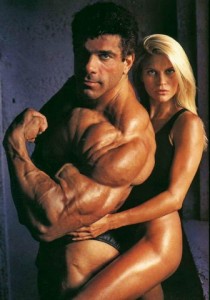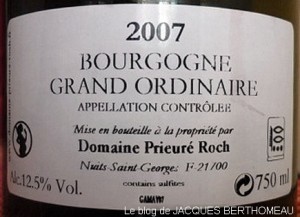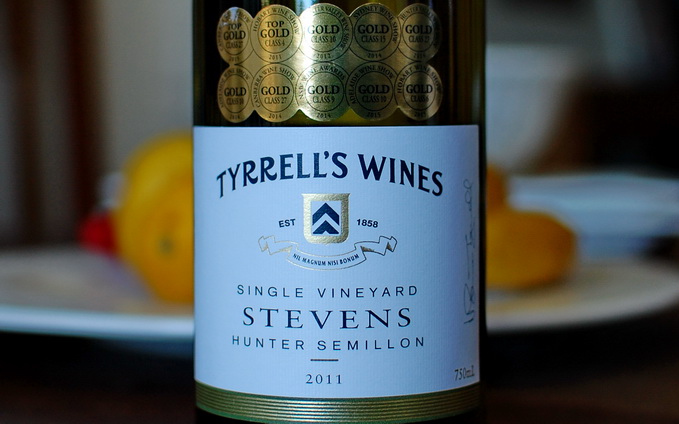And how to Avoid them
I came across an article by Matt Kramer at the Wine Spectator: Rookie Mistakes. We’ve all made them. What are they?
Matt says: ‘If there’s anything that wine lovers of experience share—apart from the never-ending search for a good deal—it’s the wincing memory of rookie mistakes. No one is exempt. Anyone who’s bought wine for a few years and caught the collecting bug has, over time, looked back and said, “What was I thinking?”’
I suspect that rings a bell with most of us, but I’d argue that rookies aren’t alone here. I’m the first to admit that I still make mistakes, and I’ve been tasting and buying and cellaring wine for over 40 years. Let’s have a look at the most common bad buying decisions.
- Mistaking Power for Beauty
 This is not a rookie mistake, as we see it time and time again at wine shows where experienced judges fall for the perfumed, busty blonde or the tall, dark and manly looking guy. It’s easy to succumb to the obvious charms of a wine that leaps out of the glass and kisses you on the lips, and to miss the more subtle characters of a classy fine wine. Think of the big, buttery, oaky chardonnays of old.
This is not a rookie mistake, as we see it time and time again at wine shows where experienced judges fall for the perfumed, busty blonde or the tall, dark and manly looking guy. It’s easy to succumb to the obvious charms of a wine that leaps out of the glass and kisses you on the lips, and to miss the more subtle characters of a classy fine wine. Think of the big, buttery, oaky chardonnays of old.
Power is strength of flavour and size, meaning high alcohol, and here’s the rub: the current fashion of high alcohol reds – 14.5% has become the norm – has less to do with global warming than their greater glycerol content, which adds perceived sweetness and viscosity, That’s why big reds often come across as plush and velvety, which makes them easier to sell to judges and punters alike.
More in: Aussie Reds – so much alcohol, so little finesse.
More up-front fruit is another cheap trick that works an easy magic on most of us when combined with high alcohol, therefore the ‘Barossa fruit bombs’ we see so many of these days. A Thorn-Clarke Shotfire Quartage comes to mind, a Bordeaux blend that is choc-full of sweet cassis and ripe black currants. A 2009 I opened the other day was somewhere between jam and Ribena.
- Blinded by the Bling
Over the years my wine friends and I have bought hundreds of wines on the strength of their trophies & golds, and their rave reviews, and have shaken our heads wondering how they earned them. Did they bribe the judges and buy the critics? Yet I confess that I’m still blinded by the bling and have to pinch myself to remind me of the money I wasted on highly decorated wines that ended up being poured down the sink. The Tyrrells Hunter Semillon in the image below is a good example. I bought some of it sight unseen, because it’s won a truckload of bling, and Tyrrells know what they’re doing, and the price was sharp at $26. It’s an awful wine. I can only hope that it gets better if I sit on it for another decade.
My old friend Huon Hooke is a wine judge, and chairman of judges at many of our shows, and he took me to task about a recent blog post I wrote under the heading: Canberra International Riesling Challenge 2016 – It’s a simple little show, so what went wrong?
He made the point that wine judging is a difficult business, and that at shows like these, wines are judged by several teams and the winners judged again by others … In other words, the judging is done by professionals (local and OS), with all kinds of checks and balances, but here am I saying they haven’t got a clue and I know better.
Huon has a point, I don’t deny that. In Paul’s Simon’s words: who am I to blow against the wind? On this occasion, I’m not alone as you can see: I’ve put The Winefront’s scores in brackets.
- Vickery Watervale Riesling 2016 – 82 (WF: 92)
- Vickery Eden Valley Riesling 2016 – 87 (WF: 94)
- O’Leary Walker Polish Hill 2016 – 83 (WF: 93)
- Pikes Traditionale Riesling 2016 – 83 (WF: 93+)
- Leo Buring Clare Valley Dry Riesling 2016 – 85 (WF: 90)
- Mountadam Vineyards Riesling 2016 – 88 – (WF – 93)
You will understand why I don’t taste wines like judges at large clinical wine tastings, but pull them apart over several days on my kitchen bench with and without food, 3 or 4 wines at a time. I scored all of these wines 93 -96 points, and I’ll back my judgement against anybody. Yes, I’ve had a few subscribers writing to me that I scored this wine too low and that wine too high in their view but we’re only talking about a couple of points, not 10. Being out by 10 points on what is an effective scale of 20 is ludicrous.
2021 Update: I bought quantities of the John Vickery wines, the Pikes and the Leo Buring, and 5 years later they are classic examples of that great vintage, with the Vickery EV 2016 one of the best Rieslings I’ve ever tasted.
I’ve long argued that our wine judging system is broken. More in our post Do Australian Wine Shows have a bright future? Not if past performance is anything to go by.
- Buying Too Much Vin Ordinaire
Discounts used to tempt us to buy unbroken dozens. How often have you found that, after you’ve drunk 2 or 3 bottles over a couple of years, the wine wasn’t as good as you remembered, or that it didn’t improve the way you expected or the reviewer suggested? How do you avoid falling into this trap? That’s a tough question. Like most people, wine is tricky and often unpredictable, and doesn’t fulfill the promise it showed in its youth.
 Many people think they avoid the trap by buying cases of a wine that’s predictable and consistent. I see people in BYO restaurants drinking bottles of Poachers Blend or Cricket Pitch. They avoid the gamble inherent in any buying decision, but ensure that all the wine they drink is boring. These days, most wine merchants give us the full discount on mixed cases, and on mixed 6-packs, so there’s no excuse to buy boring wine: if you make a mistake, it won’t be on the scale of a full dozen.
Many people think they avoid the trap by buying cases of a wine that’s predictable and consistent. I see people in BYO restaurants drinking bottles of Poachers Blend or Cricket Pitch. They avoid the gamble inherent in any buying decision, but ensure that all the wine they drink is boring. These days, most wine merchants give us the full discount on mixed cases, and on mixed 6-packs, so there’s no excuse to buy boring wine: if you make a mistake, it won’t be on the scale of a full dozen.
The wine world is full of surprises and letdowns, but you’ll never experience these highs and lows unless you take risks.
- Not Buying Enough of a Great Deal
That’s the flipside of the No 2 coin above: how often do you find yourself pondering the second-last bottle of a lovely wine, wishing you’d bought another case of it? I make this mistake often, mostly because a lot of my buying is samples for review and recommendation, which leaves limited funds and storage for personal stock. Here are some recent examples:
- St John’s Road Peace of Eden Riesling 2015 – $10 at Dan M’s
- Devils Lair Hidden Cave Cabernet Shiraz 2013 – $13 at Dan M’s
- Topers Chardonnay 2013 – $13 ex-winery
The last one of these I even ran as a special! The others are terrific wines at their usual $20 price, and I should’ve grabbed more when they popped up as member specials. How do you avoid this trap? Don’t rush things. Open a bottle over lunch or dinner with your partner and a couple of wino mates; if they agree, buy lots.
- Not Matching your Consumption Pattern
This is a mistake I’m still working hard to correct. Years ago, my cellar used to be 75% reds and 25% whites and a few bubblies and stickies. Except for winter, I drink 4 bottles of white for every bottle of red because I eat mostly seafood and chicken and pork the rest of the year. I’m still trying to get my cellar to reflect that. (It’s over half full with Riesling and Chardonnay now, so I must be getting close.)
So when you buy wine ahead of time or for a cellar, give a thought to the food you’re eating most of the time. A quick reminder: if you don’t buy wine ahead of time, you’ll pay more than you should. Planning your purchases means you can shop around for the best deal, using mailers and websites like ours. If you buy wine from a bottle shop on the way to the restaurant, or from the BWS attached to a Woolworth’s supermarket on your way home, you’ll pay through the nose.
- Confusing (High) Price with Quality
This trap takes us back to Matt Kramer who writes: ‘I doubt that there’s anyone, present company assuredly included, who hasn’t assumed that if a wine asks a high price it must, by definition, be better. That it reflects the discipline of a discriminating free market. Big mistake—and not always a rookie one, either.’
Matt concedes that there’s no easy way to avoid falling into this trap, other than fine-tuning your palate and your judgement. That takes much time and effort, and the confidence to back your own judgement. It’s like the bling we talked about: how can so many judges be so wrong? How can a winery ask $200 for a bottle of wine unless it’s clearly better than the $20 wine you’re enjoying?
- Buying Too Much Wine
I’m lucky to have a bunch of generous wine friends who’re happy to share the best wines from their cellars at our regular lunches and dinners. Sadly, at least 3 out of 5 wines they bring along would’ve been in better shape 10 or 15 years ago. It’s painful to taste a Grand Cru Bordeaux or Burgundy from a great year thinking about how much better it would’ve been a decade ago.
We’ve all been carried away buying wine but, if you end up with surplus wine or wine that you can’t get through in its prime, send it to an auction house. It’s better to get some of your money back while you still can. If it’s a premium label wine you bought many years ago, you should get much more than your money back. Langton’s and Gray’s are well-known but I prefer Wickman’s, which is smaller and more personal.
Kim

